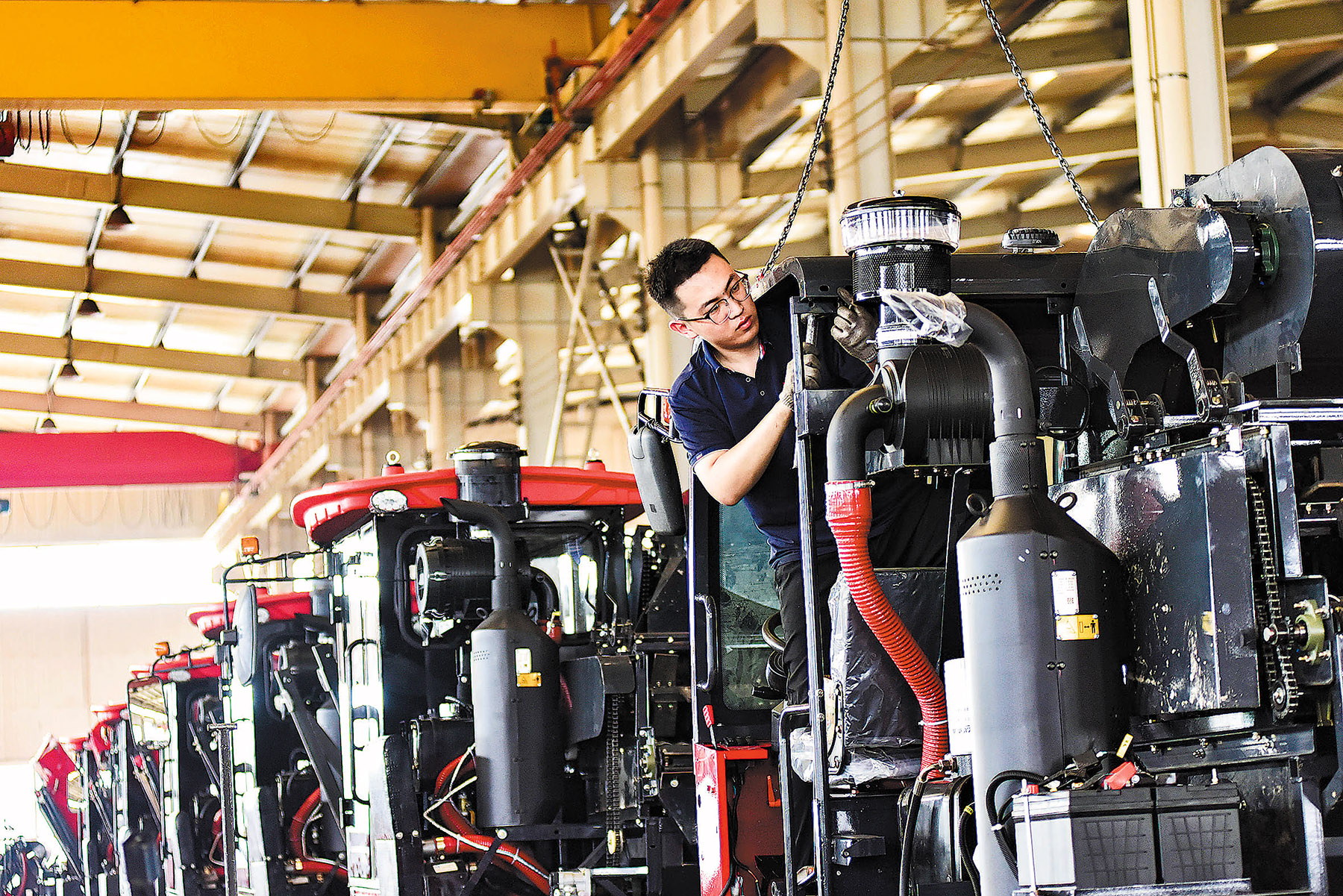Additional support measures seen as necessary to reach annual growth target

China's manufacturing data put up a mixed performance in August, thus increasing the necessity of launching additional macroeconomic policy support measures to ensure the achievement of the country's annual growth target, economists and analysts said.
The Caixin China General Manufacturing Purchasing Managers' Index, a privately gauged indicator of the operating conditions of the country's manufacturing sector, rose to 50.4 in August, up from 49.8 in July, media group Caixin said in a report on Monday.
Rising past the 50-mark that separates expansion from contraction, the latest data signaled that conditions in the manufacturing sector improved following a brief deterioration in July. The rate of improvement was only marginal, however, the report said.
READ MORE: China's industrial profits up 3.6% over January-July
Survey respondents revealed that better underlying demand conditions and promotional efforts underpinned the latest rise in new orders, though export orders were subdued, falling marginally for the first time so far this year.
Monday's data contrasted with the official PMI figure released on Saturday. The official PMI for the manufacturing sector dropped from 49.4 in July to 49.1 in August, staying in contraction territory for the fourth consecutive month, said the National Bureau of Statistics.
Wang Zhe, a senior economist at Caixin Insight Group, said: "The Caixin manufacturing PMI for August returned to expansionary territory, but the growth was limited. Considering the government's ambitious annual economic growth target, the challenges and difficulties in stabilizing growth over the coming months will be substantial."
China's GDP expanded by 5 percent year-on-year in the first half, in line with the annual growth target. The growth momentum continued in July as consumer spending recovered, the speed of which, however, missed expectations while property woes continued to drag down fixed-asset investment.
"Prominent issues such as insufficient domestic demand, significant uncertainties in external demand and weak market optimism persist. There is still room for fiscal and monetary policy adjustments. There is an increasingly urgent need for China to enhance policy support and ensure the effective implementation of earlier policies," Wang said.
Pan Gongsheng, governor of the People's Bank of China, the country's central bank, said at a symposium last week that the PBOC will maintain a supportive monetary policy stance and explore incremental policy measures. The PBOC bought a net face value of government bonds worth 100 billion yuan ($14 billion) in open market operations in August, injecting liquidity into the market.
ALSO READ: Expert: China's economic growth boon to global economy
Huang Hanquan, head of the Chinese Academy of Macroeconomic Research, which is affiliated with the National Development and Reform Commission, said policymakers should consider initiating a batch of new incremental policies.
"On the fiscal policy front, we can optimize the utilization of existing funds and explore ways to revitalize government assets. On the monetary policy front, there is room for further monetary policy easing, including reductions of the reserve requirement ratio and interest rate cuts.
"China's economy will continue the recovery trend with a series of stimulus policies taking effect gradually, especially the use of funds for supporting the implementation of major national strategies, building up security capacity in key areas, driving large-scale equipment upgrades and promoting trade-in programs for consumer goods," Huang said.
Contact the writers at zhoulanxv@chinadaily.com.cn


